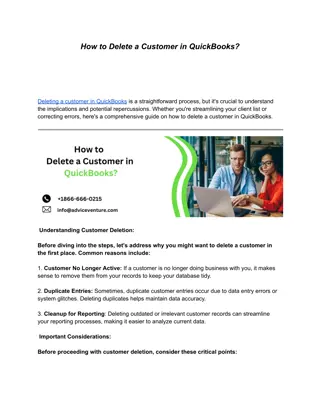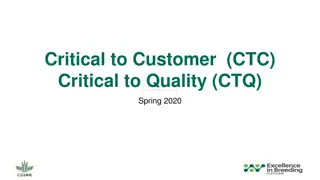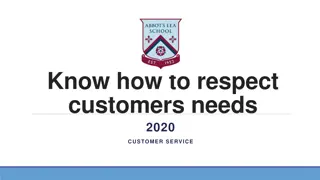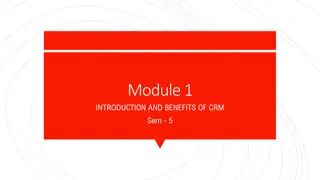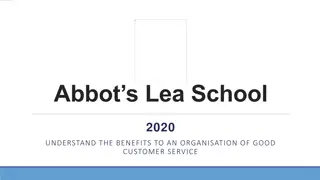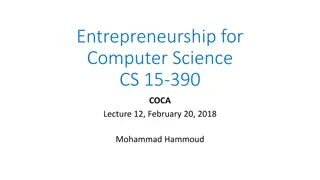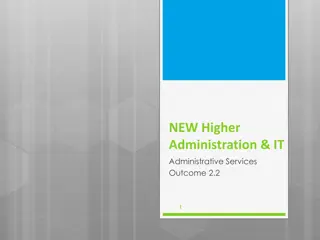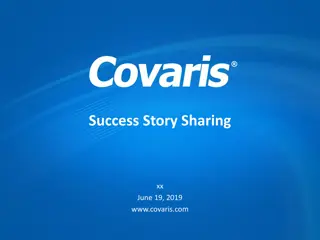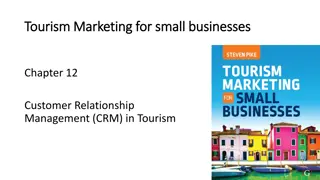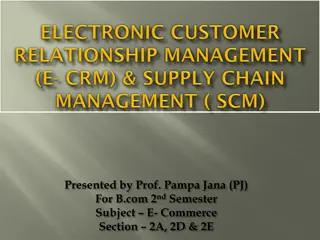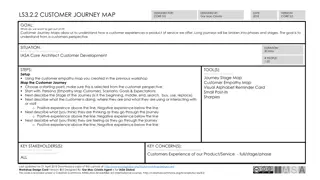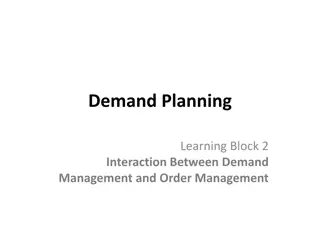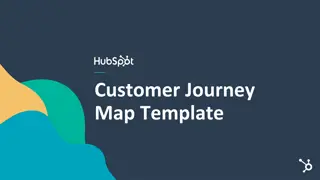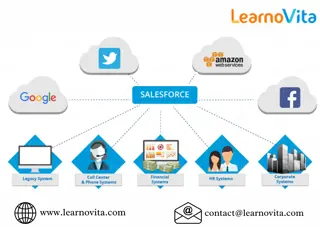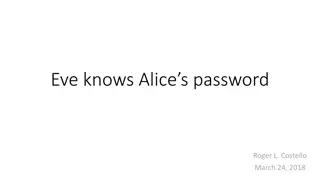Introduction to Customer Relationship Management
Take this pre-test to assess your knowledge of Customer Relationship Management (CRM) and learn about its importance in business. This test covers definitions, case studies, and types of CRM.
Download Presentation

Please find below an Image/Link to download the presentation.
The content on the website is provided AS IS for your information and personal use only. It may not be sold, licensed, or shared on other websites without obtaining consent from the author.If you encounter any issues during the download, it is possible that the publisher has removed the file from their server.
You are allowed to download the files provided on this website for personal or commercial use, subject to the condition that they are used lawfully. All files are the property of their respective owners.
The content on the website is provided AS IS for your information and personal use only. It may not be sold, licensed, or shared on other websites without obtaining consent from the author.
E N D
Presentation Transcript
INTRODUCTION TO CUSTOMER RELATIONSHIP MANAGEMENT Ms.Nalin Simasathiansophon
PRE-TEST Please go to joinmyquiz.com, then enter this code: 0922 2123 Or go to this link: https://quizizz.com/join?gc=09222123 You need to put your real name when log-in to the quiz.
oCRM is an integrated approach to identifying, acquiring and retaining customers. oBy enabling organizations to manage and coordinate customer interactions across multiple channels, departments, lines of business and geographies, CRM helps organizations maximize the value of every customer interaction and drive superior corporate performance. DEFINITIONS OF CUSTOMER RELATIONSHIP MANAGEMENT oCRM is the core business strategy that integrates internal processes and functions, and external networks, to create and deliver value to targeted customers at a profit. It is grounded on high-quality customer-related data and enabled by information technology. (CRM)
CASE STUDY: WHY STARBUCKS WINS AT CRM Three major objectives of CRM 1. Customer Acquisition: the right customers will be attracted to the business or product, based on known or learned characteristics. o Starbucks have loyalty program, My Starbucks Rewards. 2. Customer Retention: numbers of loyal customer o Among 10.4 million users (in year 2015), 6.2 million are gold members o The Starbuck s loyalty program creates an incentive for customer retention through its three levels welcome, green and gold. 3. Customer profitability: deliver profit to loyal customers o Users can work their way to gold status through increasing their purchase frequency, which earns them stars . These stars can be redeemed for free food and drinks. Source: https://marketingdiscussions.wordpress.com/2015/11/09/why-starbucks-wins-at-crm/
TYPES OF CRM Dominant characteristic Type of CRM Strategic CRM is a core customer-centric business strategy that aims at winning and keeping profitable customers. Operational CRM focuses on the automation of customer- facing processes such as selling, marketing and customer service. Analytical CRM is the process through which organizations transform customer-related data into actionable insight for either strategic or tactical purposes. Strategic Operational Analytical
1. STRATEGIC CRM oStrategic CRM is focused upon the development of a customer-centric business culture dedicated to winning and keeping customers by creating and delivering value better than competitors. oResources will be allocated where they would best enhance customer value. oThere are reward systems to promote employee behaviors that enhance customer satisfaction and retention. oCustomer information will be collected, shared and applied across the business. oA customer-centric firm is a learning firm that constantly adapts to customer requirements and competitive conditions.
Honda developed a strategy themed Customers For Life, based on data integration and a whole-of-customer view. Honda found customer-related data in numerous spreadsheets and databases across the business. These were integrated into a single CRM platform, supplied by salesforce.com, and hosted in the cloud. This was enriched with customer information from Honda Australia Rider Training (HART), Automobile Association memberships and several other sources to create a single comprehensive data source and reporting system. Honda then removed responsibility for managing customer relationships from individual departments, and moved it to the CRM unit. CASE STUDY: HONDA AUSTRALIA
2. OPERATIONAL CRM Operational CRM automates customer-facing business processes. CRM software applications enable the marketing, selling and service functions to be automated and integrated. 1. Marketing Automation (MA) applies technology to marketing processes. 2. Sales Force Automation (SFA) applies technology to the management of a company s selling activities. 3. Service Automation involves the application of technology to customer service operations. Service automation helps companies to manage their service operations, whether delivered through a call centre, contact centre, field service, the Web or face-to-face, with high levels of efficiency, reliability and effectiveness.
CASE STUDY OF SERVICE AUTOMATION : JETBLUE JetBlue is a successful US low-cost carrier known not only for its prices, but for friendly and helpful customer service, winning multiple JD Power customer service awards. It created its first Twitter account in 2007.16 Initially, like so many new technology users, the company felt that Twitter would be a sales promotion channel. Indeed, JetBlue has been imaginative in building its following and promoting ticket sales over the new channel. As its competence grew, JetBlue was able to use Twitter for real-time customer service. An anecdote is that a customer tweeted that he had left sunglasses at one of the stages before boarding and head office team monitoring the Twitter-feed was able to arrange for them to be found and returned to the passenger prior to boarding the aircraft. Customer frustrations, experiences and pleasant surprises are easier to capture at the moment they are experienced, and JetBlue s active engagement with customers over Twitter improves its ability to feel the experience as a customer does and make necessary improvements quickly.
3. ANALYTICAL CRM oAnalytical CRM, also called analytic CRM, is concerned with capturing, storing, extracting, integrating, processing, interpreting, distributing, using and reporting customer-related data to enhance both customer and company value. oAnalytical CRM builds on the foundation of customer-related information. Customer- related data may be found in enterprise-wide repositories: sales data (purchase history), financial data (payment history, credit score), marketing data (campaign response, loyalty scheme data) and service data. oAnalytical CRM can lead companies to decide that selling approaches should differ between customer groups. Higher potential value customers may be offered face-to- face selling; lower value customers may experience telesales. oAnalytical CRM underpins the operational CRM decisions making.
MISUNDERSTANDINGS ABOUT CRM 1. CRM is not database marketing: Analiytical CRM shows that data will be used for marketing purpose, market segmentation, targeting, offer development and customer communication. 2. CRM is a marketing process: Operational CRM can use customer- related data to produce customized products and services. 3. CRM is an IT issue: It is not since CRM technology provides tools that can be used to generate better value for customers. CRM implements by two parts: people and process. People develop and implement the processes that are enabled by the IT. IT is, therefore, a part of most CRM strategies.
MISUNDERSTANDINGS ABOUT CRM (CONT.) 4. CRM is about loyalty schemes: Not all CRM implementations are link to loyalty schemes. o Loyalty schemes may play two roles in CRM implementations. First, they generate data that can be used to guide customer acquisition, retention and development. Second, loyalty schemes may serve as an exit barrier. 5. CRM can be implemented by any company: Any company can implement strategic and operational CRM, but not analytical CRM. o At the very least, data are needed to identify which customers are likely to generate most value in the future, and to identify within the customer base the segments or customers that have different requirements. Only then can different offers be communicated to each customer group to optimize company and customer value over the long term. If these data are missing then analytical CRM cannot be implemented.
CRM CONSTITUENCIES 1.Companies implementing CRM 2.Customers and partners of those companies 3.Vendors of CRM systems (i.e. IBM) 4.CRM cloud solutions providers (i.e. salesforce.com, Microsoft Dynamics) 5.Social media players 6.Vendors of CRM hardware and infrastructure (vendor who provide technologies, such as computer, servers, etc.) 7.Management consultants: provides strategy, business, application and technical consulting
Identify who your customers are MODELS OF CRM The IDIC model Companies should take four actions in order to build closer one-to-one relationships with customers: Differentiate your customers (value now and future value) Customize the offer and communication to met customer expectations IDIC Model Interact with customers to understand their expectations
MODELS OF CRM (CONT.) The CRM Value Chain
MODELS OF CRM (CONT.) Payne and Frow s 5-process model This model clearly identifies five core processes in CRM: the strategy development process, the value creation process, the multi- channel integration process, the performance assessment process and the information management process. The first two represent strategic CRM; the multi-channel integration process represents operational CRM; the information management process is analytical CRM.
The Gartner competency model The model suggests that companies need competencies in eight areas for CRM to be successful.
VDO: THE OUTCOMES OF USING CRM IN AIRLINE BUSINESS (SOUTHWEST AIRLINES)
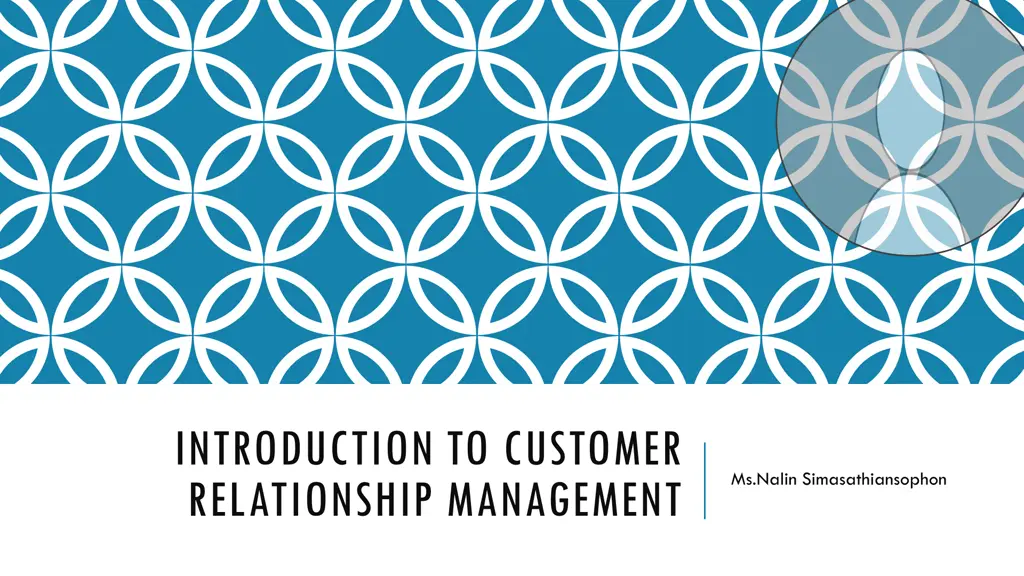
 undefined
undefined














